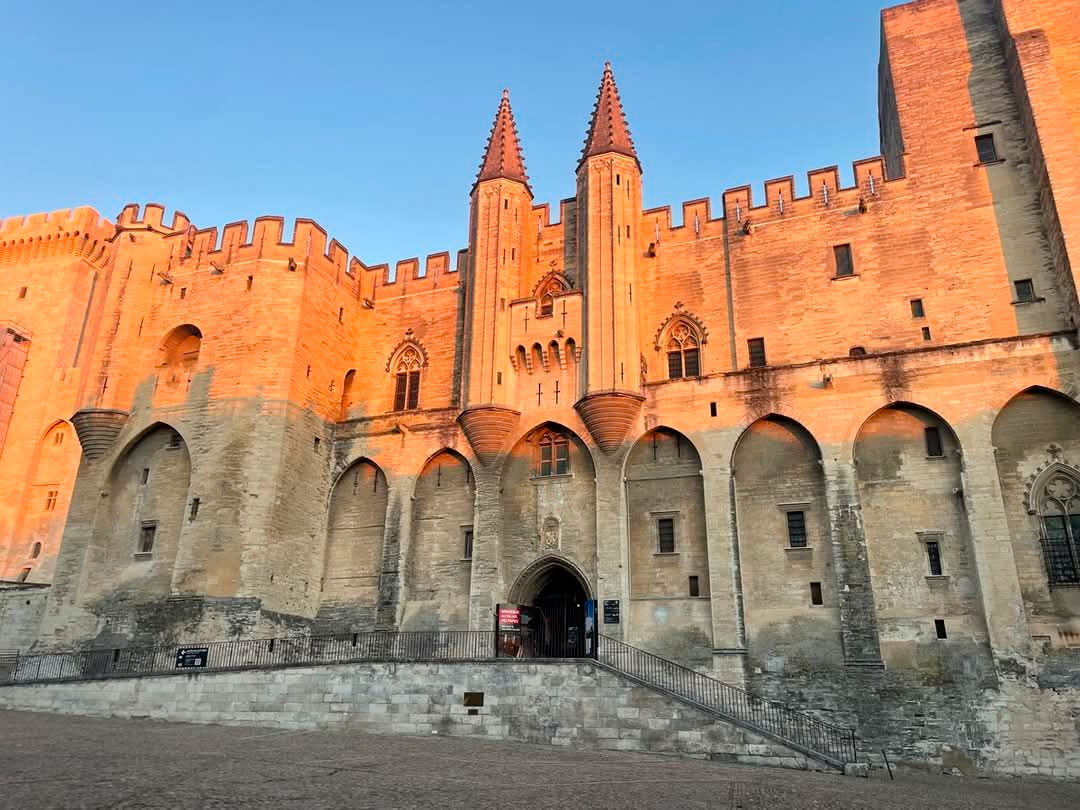Explore the Palais des Papes in Avignon—Europe’s largest Gothic palace, a UNESCO World Heritage site, and a key cultural and economic landmark.
The Palais des Papes in Avignon stands as the largest Gothic palace in Europe, encompassing approximately 15,000 square meters. Constructed in the 14th century, it served as the residence for nine popes during a period when the papacy was based in Avignon. Today, it is a UNESCO World Heritage Site and one of France’s top ten most visited monuments, attracting around 650,000 visitors annually. The palace significantly contributes to Avignon’s economy and cultural identity, hosting major events like the Festival d’Avignon.
Why visit the Palais des Papes in Avignon
The Palais des Papes offers a comprehensive insight into 14th-century ecclesiastical architecture and the historical significance of the Catholic Church. Its vast halls, chapels, and private apartments provide a detailed look into the lives of the popes who once resided there. The palace’s UNESCO World Heritage status underscores its global cultural importance. Visitors can explore over 25 rooms, including the Grand Tinel, Consistory Hall, and the Chapel of Saint Martial, adorned with frescoes by Matteo Giovanetti. The Histopad, an interactive digital guide, enhances the visitor experience by reconstructing the palace’s historical interiors. Additionally, the palace hosts various cultural events, exhibitions, and concerts throughout the year, making it a dynamic center for arts and history.
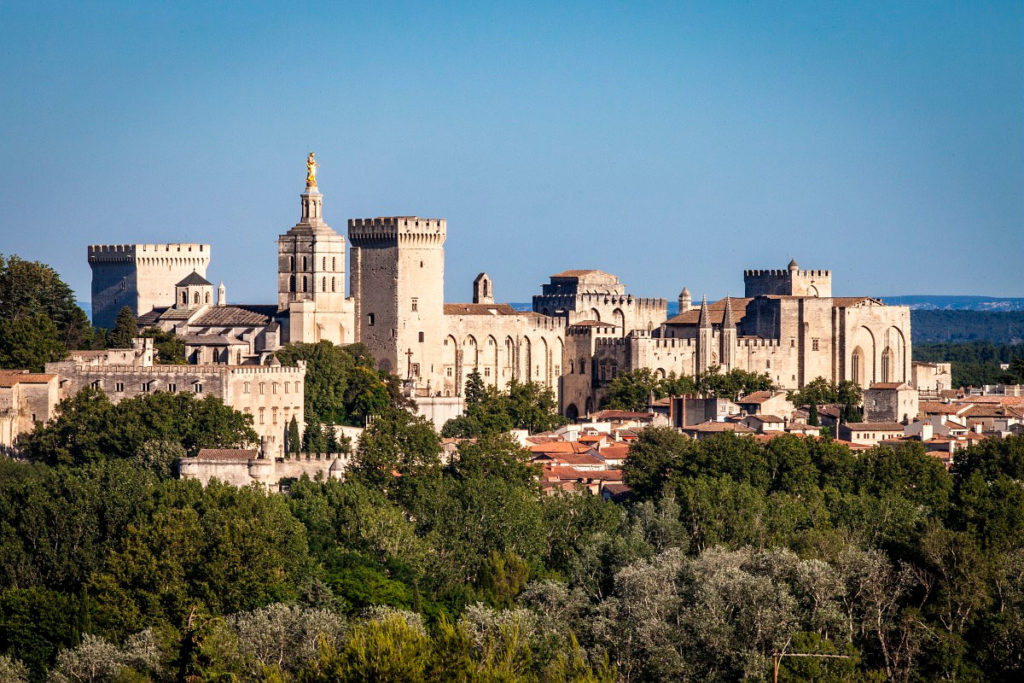
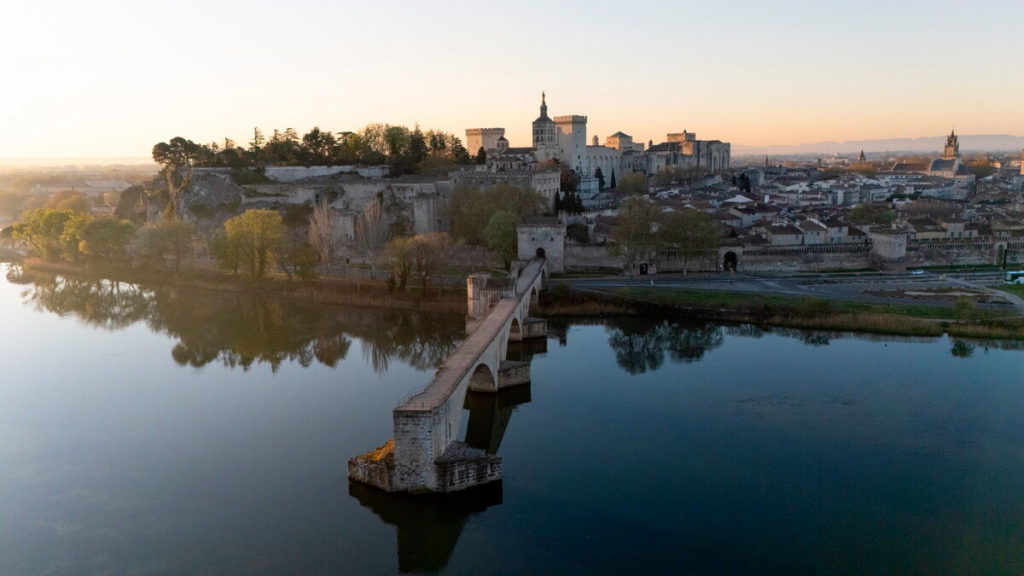
Location of the Palais des Papes in Avignon
Situated in the heart of Avignon, the Palais des Papes dominates the city’s skyline from its position on the Rocher des Doms. The palace is easily accessible, located approximately 90 kilometers from Marseille and about 230 kilometers from Lyon. Avignon is well-connected by the TGV high-speed train, with the Avignon TGV station just a short distance from the city center. The palace’s central location allows visitors to explore other nearby attractions, such as the Pont d’Avignon, Avignon Cathedral, and the Petit Palais Museum, all within walking distance.
A brief history of the Palais des Papes in Avignon
The Palais des Papes was built between 1335 and 1352, during the period known as the Avignon Papacy (1309–1377), when the papal court temporarily relocated from Rome to Avignon due to political instability in Italy and tensions with the French monarchy. The transfer was initiated by Pope Clement V, a Gascon elected in 1305, who chose Avignon—then under the control of the King of Naples and not part of France—as the new seat of the papacy.
The complex was constructed in two phases. The Old Palace (Palais Vieux) was built under Pope Benedict XII (1334–1342), a former Cistercian monk who commissioned a fortress-like structure with thick defensive walls. The New Palace (Palais Neuf) was developed under Pope Clement VI (1342–1352), who introduced more ornate Gothic elements, including grand chapels and ceremonial halls, reflecting the court’s political and cultural ambitions.
After the return of the papacy to Rome in 1377, the palace lost its central role. It was later occupied by anti-popes during the Western Schism and eventually repurposed as a military barracks under Napoleon. Major restoration campaigns in the 20th century preserved its architecture, making it a central site for heritage tourism and research today.
Importance of the Palais des Papes in Avignon
The Palais des Papes is a key driver of Avignon’s economic and cultural ecosystem. It receives around 650,000 visitors per year, making it one of the top ten most visited monuments in France. This steady tourist influx generates substantial revenue for the local economy, including hospitality, food services, retail, and transportation. According to regional data, cultural tourism linked to the palace contributes several million euros annually to the Vaucluse department’s economy.
The palace is also the cornerstone of the Festival d’Avignon, an internationally recognized performing arts event founded in 1947. Each July, the Cour d’Honneur becomes the main stage for avant-garde theatre productions, drawing tens of thousands of spectators and boosting seasonal employment and business activity in the city. The event is supported by public and private funding and acts as a cultural export with global influence.
Environmentally, the palace’s custodianship aligns with UNESCO’s heritage preservation standards. The Centre des Monuments Nationaux, responsible for its management, has implemented energy-saving measures, controlled visitor flows, and conservation programs to protect fragile frescoes and stonework. These efforts aim to balance public access with long-term conservation, reinforcing the palace’s value as both an economic asset and a preserved historical site.
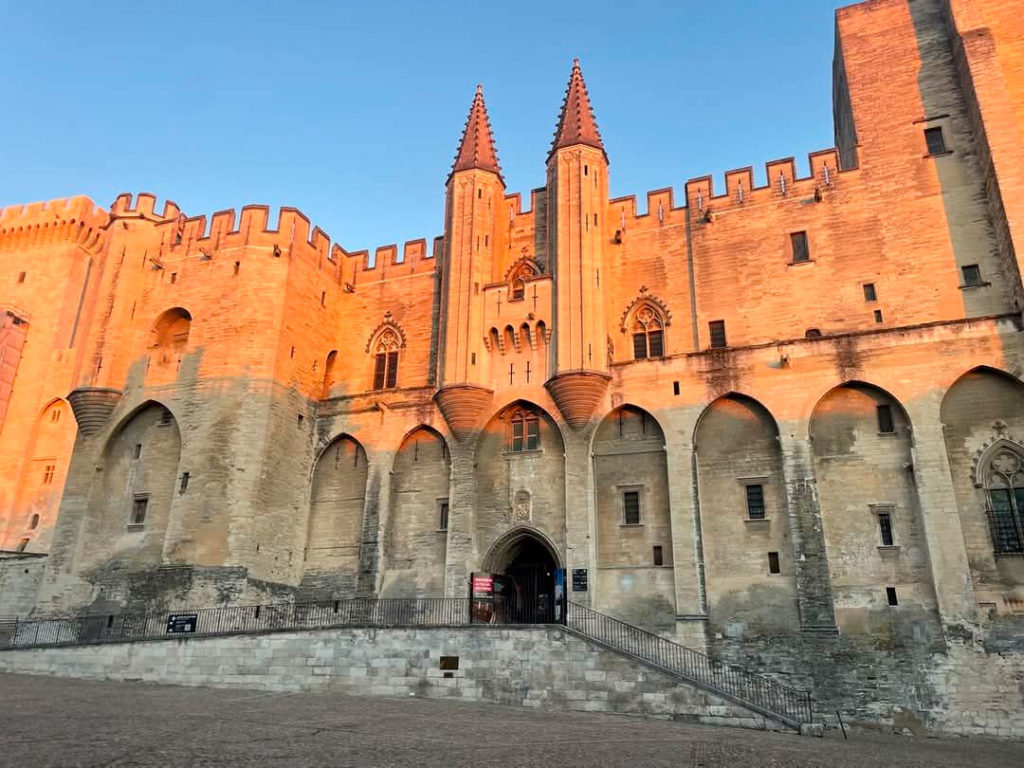
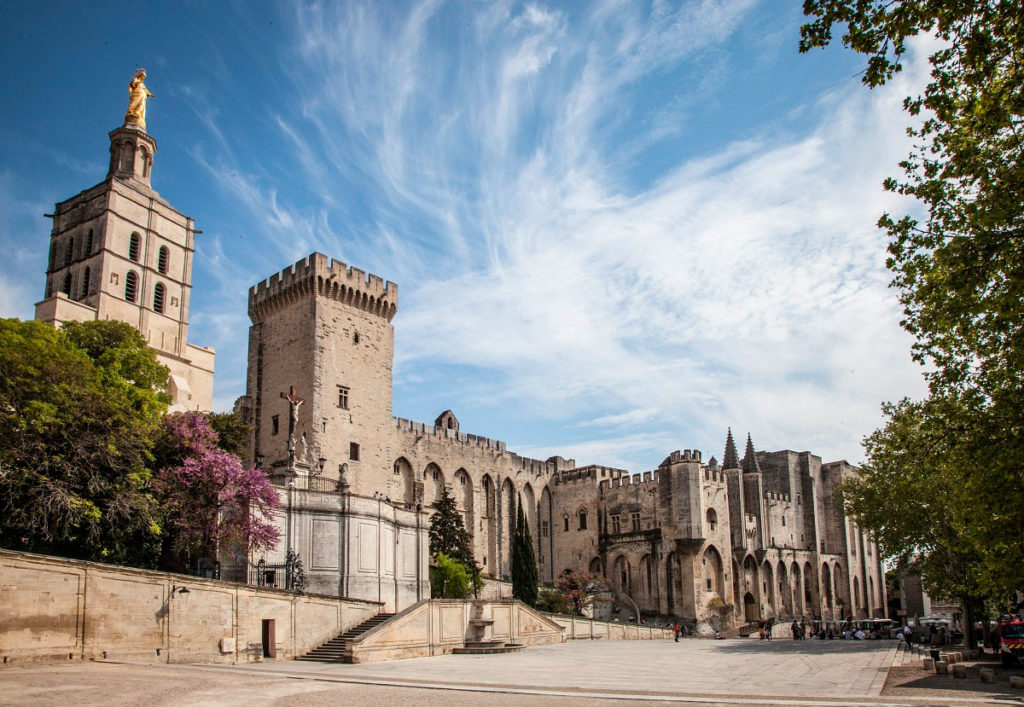
Special features of the Palais des Papes in Avignon
The Palais des Papes boasts several unique architectural and artistic features. Its Gothic architecture is characterized by massive walls, towers, and intricate stonework. Inside, visitors can admire the frescoes by Matteo Giovanetti, which depict religious scenes and offer insight into 14th-century art. The palace’s Gardens, recently reopened to the public, provide a tranquil space that complements the historical ambiance of the site. Additionally, the Histopad offers an interactive experience, allowing visitors to visualize the palace’s historical appearance through augmented reality.
How to visit the Palais des Papes in Avignon
Opening Hours:
The Palais des Papes is open daily. From March to October, it operates from 9:00 AM to 7:00 PM, and from November to February, from 9:30 AM to 5:45 PM. Visitors should check the official website for any changes in hours due to special events or maintenance.
Ticket Prices:
- Standard admission: €12
- Children (8-17 years): €6.50
- Combined ticket (Palace + Pont d’Avignon): €14.50
- Combined ticket (Palace + Gardens): €14.50
- Combined ticket (Palace + Pont d’Avignon + Gardens): €17
- Children under 8: Free
Accessibility:
Due to the historic nature of the building, the palace has limited accessibility for individuals with mobility challenges. However, efforts have been made to accommodate visitors, and it’s recommended to contact the palace in advance for specific information.
Best Times to Visit:
To avoid crowds, consider visiting during weekdays and outside of peak tourist seasons, such as late spring or early autumn. Early morning visits can also provide a more serene experience.
Additional Tips:
- The Histopad is included with the admission ticket and enhances the visit through interactive features.
- Photography is permitted in most areas, except in rooms with delicate frescoes.
- The palace is not climate-controlled; visitors should dress appropriately for the weather.
XperienceFrance is your travel specialist in France.
